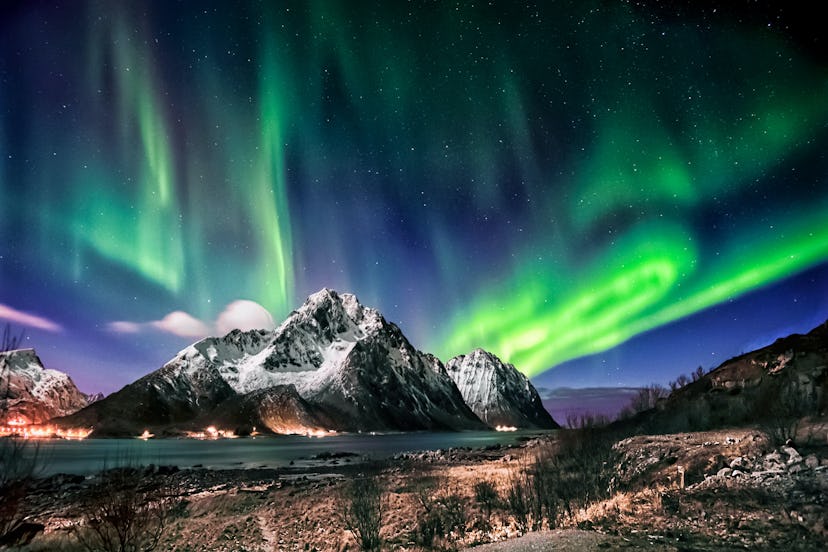These Lucky Americans Might Catch Some Valentine's Day Auroras
For some lucky Americans, Valentine’s Day is going to have some extra sparkle that won’t take any effort on your part to soak in.

For some lucky Americans, Valentine’s Day is going to have some extra sparkle that won’t take any effort on your part to soak in. However, to be able to see it live and not through a live stream, you’ll need to live in a few specific states. But here’s what you need to know.
What is the Aurora Borealis?
According to curiocity, the gasses in Earth’s upper atmosphere collide with the sun’s charged particles, giving us the gorgeous show known as the Aurora Borealis. Also called the Northern Lights, this spectacular sky show produces moving, intense, and incredibly bright shapes in the sky.
The lights come in many colors, with pink and green being the most common, though shades of purple, blue, yellow, and red have been reported, according to the Northern Lights Centre.
“The lights appear in many forms from patches or scattered clouds of light to streamers, arcs, rippling curtains or shooting rays that light up the sky with an eerie glow,” the site explains.
Where can we see the Aurora Borealis this Valentine’s Day?
The light show occurs near the magnetic poles, which means it’s not visible everywhere and is mostly seen in northwestern parts of Canada, such as the Yukon, Northwest Territories, and Nunavut, as well as further North. Sometimes, those lights shift southward, far beyond their usual territory. That means that tonight, some lucky Americans could still get a glimpse at one of the world’s most splendid wonders.
That’s because sometimes, when there’s some extra wind and upset space weather, a geomagnetic storm forms, according to EarthSky. That means the light show can extend beyond the poles, and it’s been seen “as far south as New Orleans,” the Northern Lights Centre reports.
Unfortunately, the Valentine’s Day light show isn’t expected to extend beyond the northernmost states in the U.S. — the EarthSky map appears to show that Northernmost parts of Montana, North Dakota, and Minnesota has a small chance of seeing the Borealis.
But ultimately, the show will primarily be visible in Alaska, plus the northern parts of Canada. But if you live there, it’s a good night to go out and look at the sky with your Valentine or the kids and see what you can find.
The Space Weather Prediction Center, part of the National Oceanic and Atmospheric Administration, has a map that tracks where the lights are predicted based on the time and date.
Additionally, the University of Alaska Fairbanks also has a map where you can follow the data predicting where the lights can be seen.
No where near the Aurora Borealis? No problem! Watch a live stream.
If you’re not one of the lucky ones who live in Alaska or the northernmost parts of Canada, you can catch the light show from the comfort of your home.
Explore.org, the world's leading philanthropic live nature cam network, has a camera set up to catch the Aurora Borealis.
Aurora live also offers a live cam network to be able to see the lights as well, and offers different looks based on different locations.